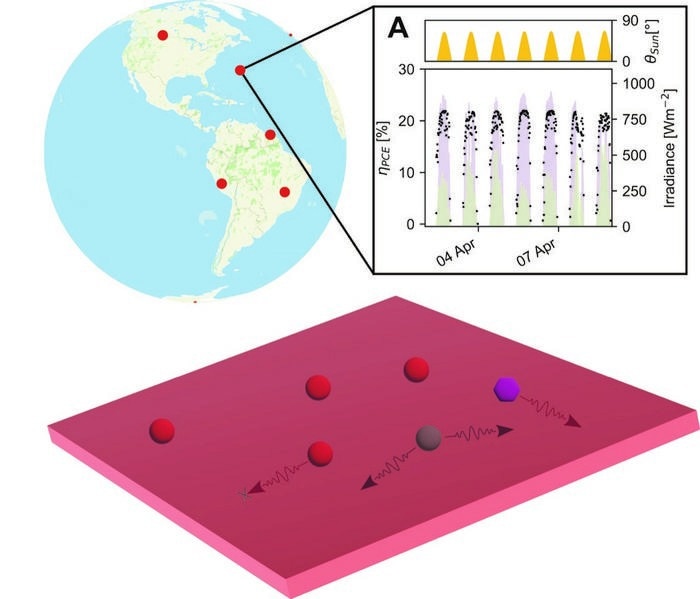Scientists are constantly looking for new ways to improve, with one major area of focus being solar energy. One approach in this field is to improve solar cell efficiency by focusing more sunlight on them. While investigating this recently, a group of scientists at the Cavendish Laboratory and AMOLF (Amsterdam, NL) discovered that improving solar cell efficiency in this way is more difficult than previously believed. Still, they also discovered other avenues through which solar energy capture could be improved anywhere on the planet.
 Simulation results of light concentrating devices around the world. Image Credit: Dr. Tomi Baikie, Cavendish Laboratory, University of Cambridge
Simulation results of light concentrating devices around the world. Image Credit: Dr. Tomi Baikie, Cavendish Laboratory, University of Cambridge
The researchers wanted to see if solar cells, which convert sunlight into energy, might be tuned to operate better in different places where solar light concentrations are higher. To investigate this, they utilized machine learning models and neural networks (AI) to predict how the sun's radiation will behave in various locations on Earth.
They used this data to create an electronic model that calculated the output of the solar cells and predicted how much energy solar cells could generate in various areas across the world by simulating different situations.
Nonetheless, a surprising development emerged from their research, which was published in Joule.
Making solar cells super-efficient turns out to be very difficult. So, instead of just trying to make solar cells better, we figured some other ways to capture more solar energy. This could be really helpful for communities, giving them different options to think about, instead of just focusing on making the cells more efficient with light.
Dr. Tomi Baikie, Study First Author and Research Fellow, Cavendish Laboratory, University of Cambridge
Consider solar panels that can flex and fold like origami, or become partially transparent, blending smoothly with their surroundings and making installation simple. By improving the endurance and adaptability of these panels, they might be used in a variety of contexts, ensuring lifetime and efficiency.
Baikie added, “We suggest a different plan that can make solar panels work well in lots of different places around the world. The idea is to make them flexible, a bit see-through/semi-transparent, and able to fold up. This way, the panels can fit into all kinds of places.”
Furthermore, the researchers recommend patterning the solar capture devices to optimize their arrangement for optimal sunlight absorption. This technique has the potential to enhance the design of solar arrays, boosting their efficiency in harvesting solar energy.
“This realization means that we can now focus on different things instead of just making solar cells work better. In future, we are going to examine solar harvesting pathways that include tessellation. It is like a puzzle pattern that could help us capture even more sun power,” Baikie concluded.
Journal Reference:
Baikie, T. K., et. al. (2024) Revealing the potential of luminescent solar concentrators in real-world environments. Joule. doi:10.1016/j.joule.2024.01.018